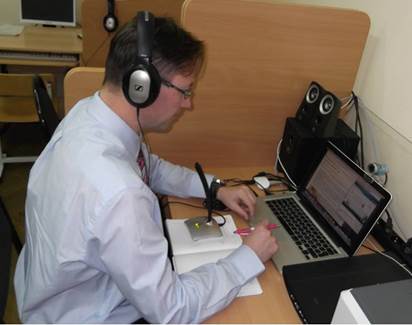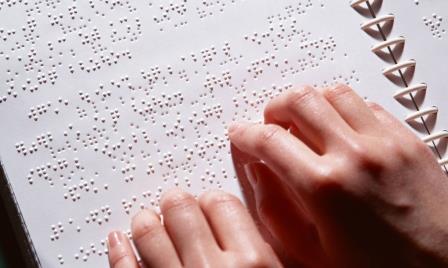References
- Schwab K. The fourth industrial revolution. Moscow, 2016. 138 p. [Electronic resource]. Electron dan. URL: http://ncrao.rsvpu.ru/sites/default/files/library/k._shvab_chetvertaya_promyshlennaya_revolyuciya_2016.pdf (date of acсess 11.08.2023). (In Russ.)
- Akaev A., Rudskoy A. Synergetic effect of NBIC-technologies and global economic growth in the first half of the 21st century [Electronic resource]. Ekonomicheskaya politika [Economic Policy]. 2014. No. 2. P. 25–46. Electron dan. EDN: https://www.elibrary.ru/item.asp?edn=rzsepz (date of acсess 11.08.2023). (In Russ.)
- Roco M. C., Bainbridge W. S. Converging Technologies for Improving Human Performance. Project Oil water separation technologies. Germany. Berlin, 2003. 25 p. [Electronic resource]. Electron dan. URL: https://www.researchgate.net/publication/252444145_Converging_Technologies_for_Improving_Human_Performance (date of acсess 27.08.2023).
- Krugman P. R. Return of the Great Depression? Moscow, 2009. 334 p. [Electronic resource]. Electron dan. URL: https://search.rsl.ru/ru/record/01004367154 (date of acсess 27.08.2023). (In Russ.)
- Alekseeva I. Yu., Arshinov V. I., Chekletsov V. V. «Techno-people» against «post-people2: NBICS-revolution and the future of man [Electronic resource]. Voprosy filosofii [Questions of Philosophy]. 2013. No. 3. P. 12–21. Electron dan. EDN: https://www.elibrary.ru/item.asp?id=18937181 (date of acсess 27.08.2023). (In Russ.)
- Dyatlov S. A. Digital neural network economics: theoretical and methodological approaches to research [Electronic resource]. Ekonomika i upravlenie: problemy, resheniya [Economics and management: problems, solutions]. 2018. No. 3 (3). P. 3–8. Electron dan. URL: https://elibrary.ru/ytdhcl (date of acсess 27.08.2023). (In Russ.)
- Agarkov S. A. Features of the spatial organization of innovation processes in the Arctic region: challenges and tasks of our time. Voprosy innovacionnoj ekonomiki [Issues of innovative economics]. 2022. Vol. 12. No. 3. P. 1759–1786. DOI: 10.48023/2411-7943_2021_9_4_21 (In Russ.)
- Agarkov S. A. Human capital in the context of current tasks of competitive development of the economy of the regions of the Russian Arctic. Idei i novacii [Ideas and innovations]. 2021. Vol. 9. No. 4. Р. 21–45. DOI: 10.48023/2411-7943_2021_9_4_21 (In Russ.)
- Romer P. Growth based on increasing returns due to specialization [Electronic resource]. American Economic Review. 1987. Vol. 77 (2). P. 56–62. Electron dan. URL: https://www.semanticscholar.org/paper/Growth-Based-on-Increasing-Returns-Due-to-Romer/64ba7bea655b46e2e9a5c274165e15fae17c27ec (date of acсess 20.09.2023).
- Romer P. Endogenous technological change. Journal of Political Economy. 1990. Vol. 98. No. 5 (2). P. 71‒102. DOI: 10.1086/261725
- Markova T. L., Pervukhina I. V., Pyankova S. G. Interrelation of megatrends, prospects for the development of the labor market and the higher education system: foreign and domestic aspects [Electronic resource]. Nauchnye trudy vol'nogo ekonomicheskogo obshchestva Rossii [Scientific works of the Free Economic Society of Russia]. 2018. T. 211. No. 3. P. 559–581. Electron dan. EDN: https://www.elibrary.ru/item.asp?id=36645095 (date of acсess 20.09.2023). (In Russ.)
- Valero A., Reenen J. V. The economic impact of universities: evidence from across the globe. Economics of Education Review. 2018. No. 68. Р. 53–67. DOI: 10.1016/j.econedurev.2018.09.001
- Trippl M., Sinozic T., Lawton Smith H. The role of universities in regional development: conceptual models and policy institutions in the UK, Sweden and Austria. Centre for Innovation, Research and Competence in the Learning Economy (CIRCLE) Lund University. 2015. № 13. DOI: 10.1080/09654313.2015.1052782
- Cataldo M. Di, Monastiriotis V., Rodríguez-Pose A. How ‘Smart’ Are Smart Specialization Strategies? Journal of Common Market Studies. 2020. No. 60 (5). Р. 1272–1298. DOI: 10.1111/jcms.13156
- Etzkowitz H., Leydesdorff L. The dynamics of innovation: from national systems and «Mode 2» to the triple helix of university-industry-government relations [Electronic resource]. Research Policy. 2000. Т. 29. No. 2. С. 109–125. Electron dan. EDN: https://www.elibrary.ru/item.asp?id=6391166 (date of acсess 12.08.2023).
- Etzkowitz H., Webster A., Gebhardt C., Terra B. R. C. The future of the university and the university of the future: evolution of ivory tower to entrepreneurial paradigm [Electronic resource]. Research Policy. 2000. No. 29 (2). Р. 313–330. Electron dan. EDN: https://elibrary.ru/item.asp?id=6391181 (date of acсess 12.08.2023).
- Carayannis E., Grigoroudis E. Quadruple Innovation Helix and Smart Specialization: Knowledge Production and National Competitiveness. Journal of the National Research University Higher School of Economics. 2016. Vol. 10. No. 1. P. 31–42. DOI: 10.17323/1995-459x.2016.1.31.42
- Carayannis E., Barth T. D., Campbell D. F. J The Quintuple Helix innovation model: global warming as a challenge and driver for innovation. Journal of Innovation and Entrepreneurship. 2012. No. 1 (2). Р. 1–12. DOI: 10.1186/2192-5372-1-2
- Leydesdorff L. The Triple Helix, Quadruple Helix, …, and an N-Tuple of Helices: Explanatory Models for Analyzing the Knowledge-Based Economy? Journal of the Knowledge Economy. 2012. No. 3 (1). Р. 25–35. DOI: 10.1007/s13132-011-0049-4
- Gjelsvik M. Universities, innovation and competitiveness in regional economies // International Journal of Technology Management. 2018. Vol. 76. Is. 1 (2). P. 10–31. DOI: 10.1504/IJTM.2018.10009596
- Kuzminov Ya., Sorokin P., Froumin I. General and special skills as components of human capital: new challenges for education theory and practice. Forsajt [Foresight]. 2019. No. 2 (13). Р. 19–41. DOI: 10.17323/2500-2597.2019.2.19.41 (In Russ.)
- Goldin C., Katz L. The Race between Education and Technology. Cambridge, MA: Belknap Press. American Journal of Ophthalmology. 2010. No. 114 (5). Р. 1413–1415. DOI: 10.1086/ahr.114.5.1413
- WEF (2017) The Global Human Capital Report [Electronic resource]. Electron dan. URL: https://www.weforum.org/reports/the-global-human-capital-report-2017/ (date of acсess 19.09.2023).
- Zemtsov S., Barinova V., Semenova R. The Risks of Digitalization and the Adaptation of Regional Labor Markets in Russia. Foresight and STI Governance. 2019. Vol. 13. No. 2. Р. 84–96. DOI: 10.17323/2500-2597.2019.2.84.96
- Kovalchuk M. V. Convergence of sciences and technologies-breakthrough to the future. [Electronic resource]. Rossijskie nanotekhnologii [Nanotechnol Russia]. 2011. No. 6. Р. 1–16. Electron dan. https://elibrary.ru/nedvvh (date of acсess 19.09.2023). (In Russ.)
- Bainbridge W. S., Montemagno C., Roco M. C. Converging technologies for improving human performance [Electronic resource]. NSF/DOC-sponsored report. 2002. 457 p. Electron dan. URL: https://www.researchgate.net/publication/252444145_Converging_Technologies_for_Improving_Human_Performance (date of acсess 19.08.2023).
- Chuchueva I. A. Forecasting time series using an extrapolation model based on maximum similarity sampling [Electronic resource]. Nauka i sovremennost' [Science and modernity]. 2010. No. 1-2. Р. 187–192. Electron. dan. EDN: https://elibrary.ru/rsljut (date of acсess 19.08.2023). (In Russ.)
- Kozlov D. V., Platanova D. P., Leshukov O. V. Where to study and where to work: interregional mobility of university students and graduates. Moscow, 2017. 32 p. (In Russ.)
- Simakova A. V., Gurtov V. A. Potential of the vocational education system of the territories of the Arctic zone of Russia [Electronic resource]. Nepreryvnoe obrazovanie: XXI vek [Lifelong education: the 21st century]. 2020. No. 3 (31). DOI: 10.15393/j5.art.2020.6053. Electron. dan. URL: https://lll21.petrsu.ru/journal/article.php?id=6053 (date of acсess 30.08.2023) (In Russ.)
- Federal State Statistics Service. Labor force, employment and unemployment in Russia [Electronic resource]. Electron. dan. URL: https://rosstat.gov.ru/folder/210/document/13211https:/rosstat.gov.ru/folder/210/document/13211 (date of acсess 29.08.2023). (In Russ.)
- Decree of the Government of the Murmansk Region dated March 20, 2019 No. 123-PP «Forecast of socio-economic development of the Murmansk Region for the period until 2035» [Electronic resource]. Electron. dan. URL: https://minec.gov-murman.ru/activities/forecasts/sub02/ (date of 5.07.2023) (In Russ.)
- Information and analytical materials based on the results of monitoring the activities of educational organizations of higher education. Characteristics of the higher education system in the Russian Federation. [Electronic resource]. Electron. dan. URL: https://monitoring.miccedu.ru/?m=vpo&year=2022 (date of acсess 26.07.2023). (In Russ.)
- On approval of the Forecast of personnel needs of the economy and social sphere of the Murmansk region for 2022‒2026 [Electronic resource]. Electron. dan. URL: https://murman-zan.ru/Documents/Detail/3a2b2de5-228c-4ad7-91b0-e98660c54f10/ (date of acсess 20.07.2023) (In Russ.)
- Alekseeva I. Yu., Arshinov V. I. The Information Society and the NBICS Revolution. Moscow: Institute of Philosophy RAS, 2016. 196 p. [Electronic resource]. Electron dan. URL: https://iphras.ru/uplfile/root/biblio/2016/alekseeva/Alekseeva.pdf (date of acсess 02.07.2023) (In Russ.)
- Guide to Research and Innovation Strategies for Smart Specialisations (RIS 3) European Commission. DOI: 10.2776/65746
- Decree of the Government of the Murmansk Region of December 25, 2013 № 768-PP/20. «Strategy for the socio-economic development of the Murmansk region until 2020 and for the period until 2025» [Electronic resource]. Electron dan. URL: https://minec.gov-murman.ru/activities/strat_plan/sub02/ (date of acсess 27.11.2023) (In Russ.)
- Agarkov S. A. Spatial organization of the Arctic economy in the context of modern challenges of neo-industrial development. Ekonomika i predprinimatel'stvo [Economics and Entrepreneurship]. 2022. No. 5 (142). P. 282–292. DOI: 10.34925/EIP.2022.142.5.053 (In Russ.)
[2]Коэффициент демографической нагрузки характеризует отношение общего числа детей в возрасте 0–15 лет и лиц старше трудоспособного возраста к численности населения трудоспособного возраста. Исчисляется в промилле (на 1000 человек населения).












